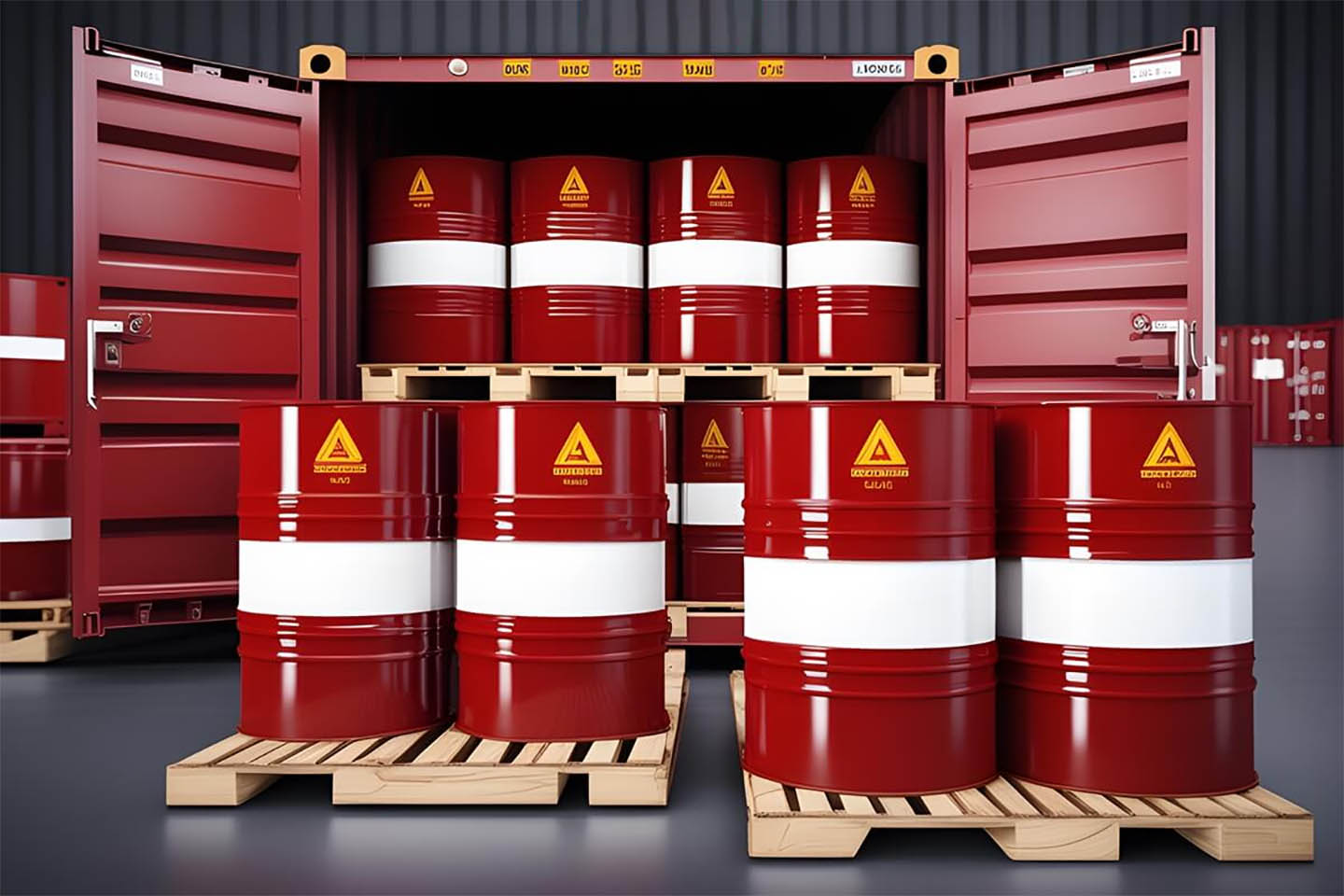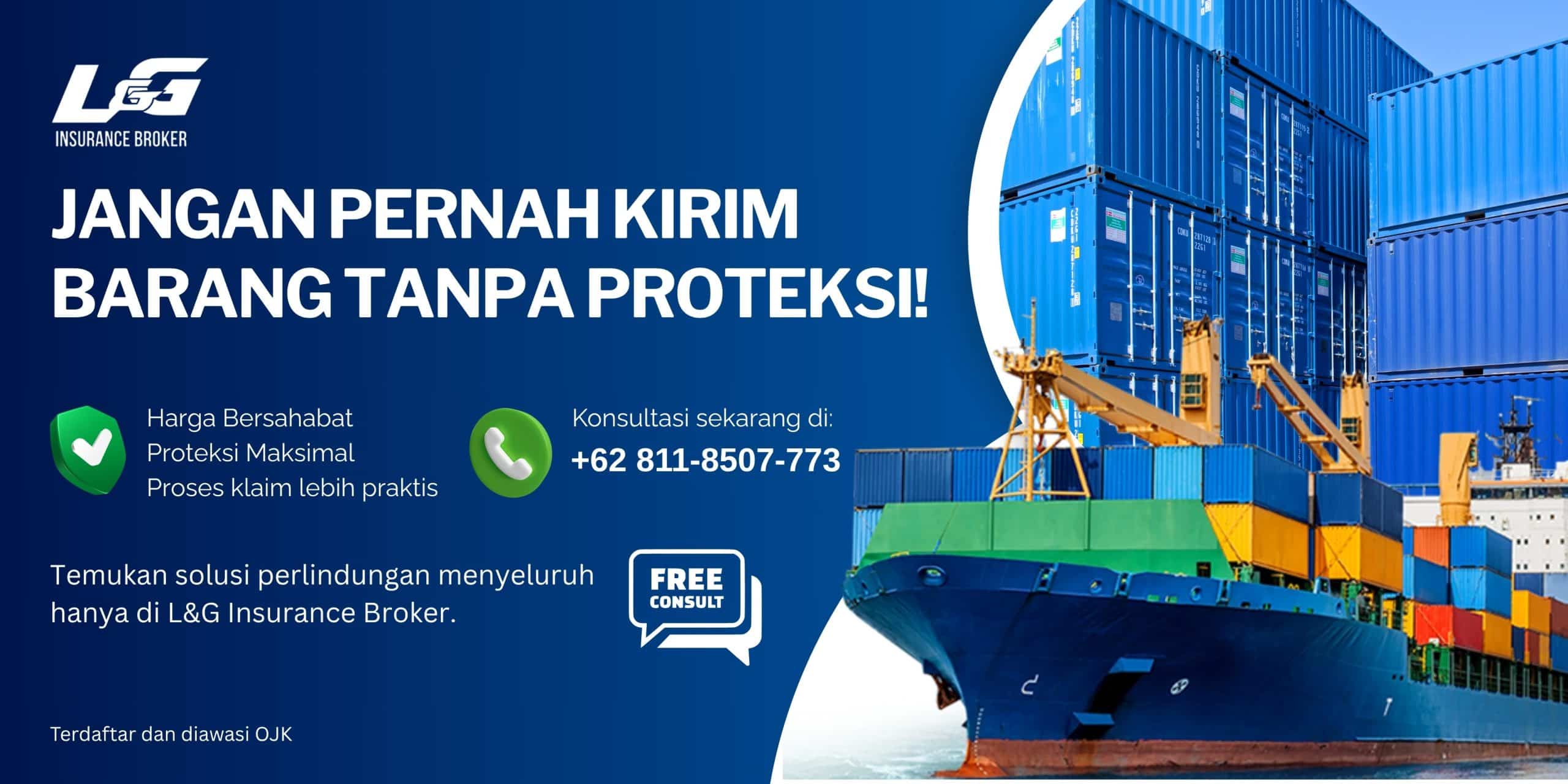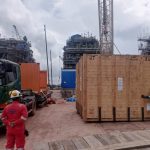Liga Asuransi – Dear risk takers, risk managers, insurers, business owners, forwarders, and all involved in chemical transportation, I hope you’re thriving in your endeavors. As a senior insurance broker, I delve into the complexities of risk and insurance in chemical transportation. This article explores comprehensive insights into safeguarding chemical shipments. If this topic resonates with you, please share it with your peers to enhance understanding and preparedness in our industry.
Chemical transportation is crucial to the functioning of various industries in Indonesia. As a rapidly developing economy, Indonesia relies on the efficient movement of industrial chemicals and liquefied gases to support its manufacturing, agriculture, energy, and pharmaceutical sectors. Industrial chemicals like solvents, acids, and bases are vital for producing consumer goods, building materials, and pharmaceuticals. In agriculture, chemicals are essential for fertilizers and pesticides, enhancing crop yields and food security.
Liquefied gases, such as LPG and ammonia, are indispensable in energy production, refrigeration, and water treatment processes. Efficient transportation of these chemicals ensures uninterrupted industrial operations, supports the country’s infrastructure projects, and meets the growing demand for energy and consumer products. By facilitating the seamless flow of these critical materials, chemical transportation plays a key role in sustaining Indonesia’s economic growth and development.
Importance of managing risks and having proper insurance coverage
Managing risks and having proper insurance coverage are vital for the transportation of chemicals. These measures protect against potential hazards such as spills, leaks, accidents, and environmental damage. Effective risk management ensures the safety of personnel, communities, and ecosystems while minimizing operational disruptions. Proper insurance coverage provides financial protection, covering losses and liabilities arising from incidents. It also enhances business resilience, ensuring continuity and compliance with regulatory requirements. By mitigating risks and securing appropriate insurance, companies safeguard their assets, reputation, and long-term profitability in the volatile landscape of chemical transportation.
Types of Chemicals Transported
Transporting chemicals involves handling a diverse array of substances, each with unique properties and uses across various industries. The main types of chemicals transported include industrial chemicals, liquefied gases, specialty chemicals, and agricultural chemicals.
Industrial Chemicals:
These are basic chemicals used as raw materials in manufacturing processes. They include acids (such as sulfuric and hydrochloric acid), alkalis (like sodium hydroxide), solvents (such as toluene and acetone), and intermediates used in producing plastics, textiles, and pharmaceuticals. Proper handling and transportation of these chemicals are crucial due to their potential corrosiveness, flammability, and toxicity.
Liquefied Gases:
Liquefied gases, including liquefied natural gas (LNG), liquefied petroleum gas (LPG), ammonia, and chlorine, are transported in specialized containers to maintain their gaseous state under pressure or low temperatures. These gases are used in various applications, from energy production to refrigeration and chemical synthesis. Given their high volatility and potential for hazardous reactions, stringent safety measures are essential during transport.
Specialty Chemicals:
Specialty chemicals are produced in smaller quantities and have specific functions, often tailored for particular applications. They include additives, adhesives, sealants, and coatings. These chemicals are used in industries such as automotive, electronics, and consumer goods. Due to their diverse nature, the transportation of specialty chemicals requires careful consideration of their unique handling and storage requirements.
Agricultural Chemicals:
Agricultural chemicals, or agrochemicals, include fertilizers, pesticides, herbicides, and insecticides. These substances are vital for modern agriculture, ensuring crop protection and soil fertility. Transporting agrochemicals necessitates adherence to safety protocols to prevent accidental releases that could harm the environment and human health.
Transporting these various types of chemicals demands specialized knowledge, equipment, and regulatory compliance to ensure safety and minimize risks. Properly managing the transportation process helps protect people, the environment, and the integrity of the chemicals being transported.
Common Modes of Transportation
The transportation of chemicals is a complex process that requires careful consideration of safety, efficiency, and regulatory compliance. The common modes of transportation include pipelines, tanker trucks, rail, and marine vessels.
Pipelines:
Pipelines are a highly efficient and safe method for transporting large volumes of chemicals over long distances. They offer a continuous flow of products, reducing the risk of spills and contamination. Pipelines are especially common for transporting liquid chemicals and gases, such as ammonia and chlorine, directly from production facilities to storage or distribution points.
Tanker Trucks:
For shorter distances and flexible delivery schedules, tanker trucks are widely used. They provide the necessary mobility to deliver chemicals directly to industrial sites, manufacturing plants, and agricultural locations. Tanker trucks are designed with specialized containers to handle a variety of chemicals, ensuring safe transport by adhering to strict safety regulations and protocols.
Rail:
Rail transport is ideal for moving large quantities of chemicals across long distances, especially when pipelines are not available. Railcars are capable of carrying bulk chemicals, including liquids and gases, in secure and insulated containers. This model is cost-effective and reliable, offering a balance between capacity and safety.
Marine Vessels:
Marine transport is crucial for the international shipping of chemicals. Tanker ships can carry vast quantities of chemicals across oceans, connecting global markets. This mode of transport is essential for importing and exporting chemicals, ensuring a steady supply chain for industries worldwide.
Each mode of transportation has its unique advantages and considerations, and the choice depends on the type of chemical, distance, and specific logistical requirements.
Key Stakeholders in the Transportation Process
The transportation of chemicals involves multiple key stakeholders, each playing a vital role in ensuring the safe, efficient, and reliable movement of these hazardous materials. Understanding the roles and interactions of these stakeholders is essential for effective risk management and operational success.
Chemical Manufacturers:
These companies produce the chemicals and are responsible for ensuring their products meet industry standards and regulatory requirements. They oversee the initial distribution of chemicals from production facilities to storage or distribution points.
Logistics and Transport Companies:
These entities specialize in the physical movement of chemicals. They operate and maintain pipelines, tanker trucks, rail cars, and marine vessels, coordinating logistics to ensure timely and safe delivery to various destinations. They are also responsible for complying with safety regulations and handling hazardous materials appropriately.
Storage Facility Operators:
Storage facilities, including tank farms and terminals, play a critical role in the supply chain. They provide the necessary infrastructure for holding chemicals at various stages of transportation, ensuring product availability, and managing inventory levels.
Regulatory Agencies:
Government bodies and regulatory agencies enforce safety, environmental, and operational standards. They set and monitor compliance with regulations governing the transportation of hazardous materials, ensuring the protection of public health, safety, and the environment.
Insurance Providers:
Insurance companies offer coverage for the risks associated with transporting chemicals, including accidents, spills, theft, and other liabilities. They provide financial protection and risk management solutions, helping stakeholders mitigate potential losses.
Customers:
End-users, including industrial plants, manufacturing facilities, and agricultural sites, depend on the reliable delivery of chemicals to meet their operational needs. They are integral to the supply chain, influencing demand and logistical planning.
Emergency Response Teams:
In case of accidents or spills, specialized emergency response teams are crucial. They are trained to manage and mitigate incidents, ensuring safety and minimizing environmental impact.
Environmental Groups:
These stakeholders advocate for sustainable practices and monitor the environmental impact of chemical transportation. Their involvement ensures that industry practices align with ecological preservation and community health standards.
Effective collaboration and communication among these stakeholders are vital for the smooth and safe transportation of chemicals, supporting the broader industrial infrastructure and economic stability.
Potential Risks in Chemical Transportation
Transporting chemicals, whether they are industrial chemicals or liquefied gases, presents several potential risks that can significantly impact safety, environmental health, and operational efficiency. Understanding these risks is crucial for developing effective risk management and mitigation strategies.
Spills and Leaks:
One of the most significant risks is the potential for spills and leaks during transportation. Any breach in containers or pipelines can lead to environmental contamination, posing severe risks to water bodies, soil, and air quality. Spills also create fire hazards and require costly cleanup efforts, which can disrupt operations and lead to legal liabilities.
Accidents and Collisions:
The transportation of chemicals involves extensive use of highways, railways, and sea routes. Accidents involving tanker trucks, rail cars, or ships can lead to explosions, fires, and hazardous material releases, endangering human lives and property. Traffic collisions and derailments can disrupt supply chains and cause significant financial losses.
Theft and Vandalism:
Chemicals are valuable commodities and can be targets for theft and vandalism. Unauthorized access to chemical shipments can result in product loss, environmental damage, and increased security costs. Vandalism can also lead to deliberate contamination or damage to transportation infrastructure.
Natural Disasters:
Natural events such as hurricanes, earthquakes, floods, and severe storms can disrupt transportation routes and damage infrastructure. Pipelines can be ruptured, and storage facilities can be compromised, leading to large-scale spills and supply chain interruptions.
Regulatory Compliance:
Non-compliance with transportation regulations can result in legal penalties, fines, and operational delays. Regulations governing the transportation of hazardous materials are stringent, and failure to adhere to these can also lead to increased scrutiny and reputational damage.
Operational and Mechanical Failures:
Equipment malfunctions, such as pump failures, valve leaks, and structural weaknesses in tankers or pipelines, can cause significant disruptions. Regular maintenance and inspections are necessary to prevent such failures.
Environmental and Public Health Risks:
Transportation of chemicals poses inherent environmental and health risks. Emissions from vehicles and vessels, accidental releases, and routine operations can contribute to air and water pollution, affecting ecosystems and communities.
Effectively managing these risks requires comprehensive planning, robust safety measures, and adherence to regulatory standards, ensuring the safe and efficient transportation of chemicals.
Risk Management Strategies
Effective risk management strategies are essential in the transportation of chemicals to mitigate potential hazards and ensure safety, environmental protection, and operational continuity.
Risk Assessment and Planning:
Conduct thorough risk assessments to identify potential hazards specific to each chemical and transportation mode. Develop comprehensive risk management plans that outline preventive measures and response strategies.
Safety Regulations and Compliance:
Adhere strictly to local and international safety regulations governing the transportation of hazardous chemicals. Ensure that all personnel involved are trained in safety protocols and emergency response procedures.
Use of Technology and Monitoring Systems:
Implement advanced technologies such as GPS tracking, remote sensing, and real-time monitoring systems to track shipments and detect anomalies promptly. These systems enhance visibility and enable quick response to emergencies.
Emergency Response Preparedness:
Develop and regularly update emergency response plans tailored to different scenarios, including spills, leaks, fires, and accidents. Conduct drills and training exercises to ensure readiness among personnel and stakeholders.
Supplier and Contractor Management:
Vet and select reliable suppliers and contractors with proven track records in handling hazardous materials. Establish clear communication channels and expectations regarding safety protocols and compliance.
Insurance Coverage and Risk Transfer:
Acquire comprehensive insurance coverage tailored to chemical transportation risks, including coverage for spills, liability, and business interruption. Work closely with insurance brokers to assess and mitigate financial risks associated with transportation.
Continuous Improvement and Evaluation:
Monitor and evaluate risk management strategies regularly to identify areas for improvement. Implement feedback mechanisms and lessons learned from incidents to enhance future safety measures and operational efficiency.
By integrating these strategies into daily operations, organizations can minimize risks, protect assets, safeguard the environment, and maintain regulatory compliance in chemical transportation.
Insurance Solutions for Chemical Transportation
Insurance solutions for chemical transportation play a crucial role in managing risks associated with transporting hazardous materials. Key insurance coverages include:
Protects against financial losses due to damage or loss of chemicals during transit, whether by road, rail, sea, or air.
Covers third-party bodily injury, property damage, and environmental liabilities resulting from chemical spills or accidents during transportation.
Pollution Liability Insurance
Specifically covers costs associated with environmental cleanup and restoration following accidental chemical releases.
Business Interruption Insurance
Compensates for lost income and additional expenses incurred if a transportation incident disrupts operations.
Cyber Insurance
Covers financial losses and liabilities arising from cyber-attacks or data breaches related to transportation logistics and information systems.
Choosing the right insurance coverage tailored to the specific risks of chemical transportation is critical. Insurance providers and brokers can offer customized solutions that address regulatory compliance, industry standards, and the unique operational challenges of transporting chemicals safely and securely.
Role of an Insurance Broker
An insurance broker plays a pivotal role in the realm of chemical transportation by acting as a liaison between businesses and insurance companies. They possess in-depth knowledge of the insurance market, regulations, and industry-specific risks associated with transporting chemicals. Here’s how they contribute:
Risk Assessment:
Brokers assess the unique risks faced by chemical transporters, such as hazardous material handling, regulatory compliance, and transportation logistics.
Tailored Insurance Solutions
They recommend and customize insurance policies to address specific risks, ensuring comprehensive coverage for cargo, liability, pollution, and business interruption.
Market Access
Brokers have access to multiple insurance providers, enabling them to compare policies, negotiate terms, and secure competitive premiums that fit their clients’ needs.
Claims Management:
In the event of an incident, brokers facilitate the claims process, advocating for clients to ensure fair and timely settlements.
Risk Management Advice:
Beyond insurance, brokers provide valuable risk management advice and strategies to mitigate exposures and enhance safety protocols in chemical transportation.
Overall, insurance brokers play a crucial role in helping chemical transporters navigate complex insurance landscapes, ensuring they are adequately protected against potential liabilities and operational disruptions.
In Indonesia Why Choose L&G Insurance Broker?
L&G Insurance Broker stands as the premier choice for Marine Cargo Insurance in Indonesia, offering unparalleled expertise and tailored solutions to safeguard businesses’ shipments across the archipelago and beyond.
With a deep understanding of Indonesia’s diverse maritime landscape, L&G Insurance Broker excels in providing comprehensive coverage for a wide array of cargo types, including automotive parts, pharmaceuticals, and industrial machinery. Their seasoned brokers leverage strong partnerships with leading insurers to negotiate competitive premiums and ensure robust protection against risks such as damage, theft, and logistical disruptions.
What sets L&G Insurance Broker apart is their commitment to personalized service and proactive risk management. They meticulously assess each client’s needs, offering bespoke insurance packages that align with specific cargo requirements and logistical challenges. This approach not only optimizes coverage but also enhances operational efficiency and mitigates financial risks associated with cargo transportation.
For businesses seeking robust Marine Cargo Insurance solutions in Indonesia, partnering with L&G Insurance Broker ensures proactive risk mitigation, comprehensive protection, and unparalleled service excellence.
For all your insurance needs, Call L&G Insurance Broker now!
—
MARINE CARGO INSURANCE FOR CHEMICAL SHIPMENT WILL BE SAFER WITH US – DON’T WASTE YOUR TIME AND CALL US NOW
24 JAM L&G HOTLINE: 0811-8507-773 (CALL – WHATSAPP – SMS)
website: lngrisk.co.id
Email: customer.support@lngrisk.co.id
—






















